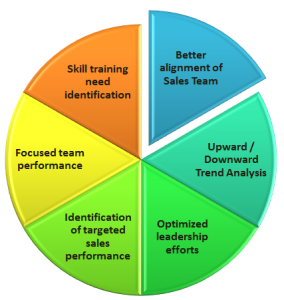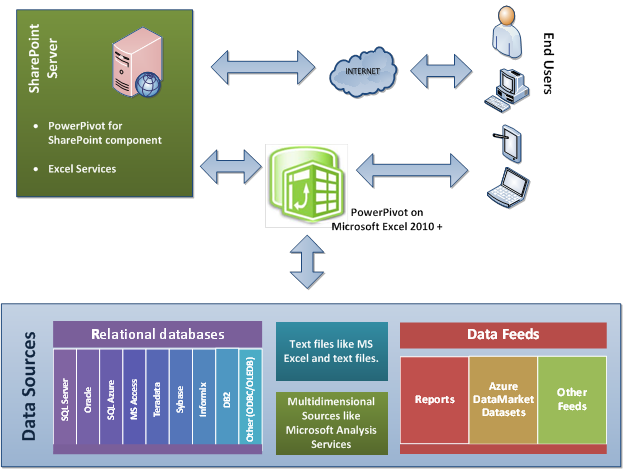While selecting the Business Intelligence Tool, many times, decision makers are interested to have some sort of quick comparison of interesting features along with drawbacks of the tools. Below is a comparison between MicroStrategy, QlikView and Pentaho.
MicroStrategy |
QlikView |
Pentaho |
| Less IT Effort and Overhead | ||
| Reusable metadata is easier to maintain requiring less redundancy, end users have more self-service capabilities that offload work from the IT staff, it provides a comprehensive suite of administrative tools requiring fewer IT administrators | Developers are forced to create redundant metadata objects as the metadata objects they create cannot be reused across multiple reports, causing unnecessary development and maintenance efforts. | Developers are forced to create redundant metadata objects as the metadata objects they create cannot be reused across multiple reports, causing unnecessary development and maintenance efforts. |
| Single Platform | ||
| MicroStrategy users get a “single version of the truth” through interactive Web, Microsoft Office, and mobile device interfaces. | Users typically must recreate metadata with each report, thus promoting “multiple versions of the truth. | Users typically must recreate metadata with each report, thus promoting “multiple versions of the truth |
| Fast and Intuitive User Experience | ||
| MicroStrategy Web user interface adheres to an “Extreme AJAX” model where processing is shifted from the Web server to the Web browsers, making for a more responsive Web interface that increases user productivity and improves user adoption. | QlikView multiple Web interfaces intended for different deployment requirements. Because each interface has different capabilities, developers are typically forced to make tradeoffs between functionality and deployment requirements | Pentaho web interface offers very limited functionality. It lacks familiar Microsoft paradigms, making the end user experience less intuitive. Enterprise reports created using the Pentaho Web are limited to basic reports without any graphs, charts or crosstabs, severely limiting end user experience and self-service capabilities |
| High Performance | ||
| ROLAP architecture which leverages the database for much of its processing, data joins and analytic calculations are processed in the database whenever possible. MicroStrategy’s multi-pass approach provides the flexibility to answer any analytical question in the most optimal manner. | QlikView stores all data and performs all calculations in memory on the middle-tier server. QlikView does not fully leverage the relational database or the hard disk on the middle-tier. These aspects of the QlikView architecture result in inefficient resource utilization and limit QlikView’s scalability. | Pentaho ROLAP engine does not provide fully implemented multi-source ROLAP and multipass SQL engines. The Pentaho ROLAP engine is unable to leverage the database to its fullest extent possible, resulting in unnecessary network and hardware resources utilization |
| Superior Analytics | ||
| MicroStrategy BI platform provides an extensive set of data manipulation and analytic options. Users can drill anywhere in the entire data warehouse for boundary-free investigative analysis. Report designers and analysts can view and embed predictive analytics in reports and then distribute them to all relevant decision makers and stakeholders | QlikView does not automatically provide drill anywhere capabilities across all reports. Report developers must pre-define all drill paths for each chart. QlikView is limited in the data mining and sophisticated predictive analytic capabilities that are available out-of-the-box. | Pentaho does not automatically provide drill anywhere capabilities across all reports and across multiple data sources. Pentaho offers very limited data mining and predictive analytics capabilities. Pentaho’s data mining lack integration with other BI platform components like dashboarding, reporting, and OLAP analysis. |
| Flexible Technology for Departmental to Enterprise BI | ||
| MicroStrategy’s metadata reusability and life cycle management tools, such as MicroStrategy Object Manager, enable departments to incrementally migrate their business logic into a consolidated enterprise BI environment. | QlikView lacks an enterprise metadata layer and the tools required to consolidate disconnected QlikView applications into one enterprise-wide BI application. | Pentaho does not have a tool equivalent to Object Manager to aid in consolidating and reconciling disparate departmental BI applications into enterprise BI. |
| Quick and Easy Deployment and Administration | ||
| Provides organizations a platform that is quick to implement and deploy as well as easy to maintain and administer, fueled by a single code base that offers the advantage of reusable business logic across the entire platform. MicroStrategy’s single BI server provides efficient, centralized administration for IT and fewer moving parts which translate into less downtime. | QlikView lacks a common reusable metadata layer that is shared across documents. This creates a maintenance challenge as developers are typically forced to continually and manually synchronize metric definitions and security profiles across documents. | Pentaho lacks a unified and reusable metadata layer creating maintenance challenge and promotes “multiple versions of the truth.” The administration console provides control over only a subset of administrative tasks. Have fewer tools to centrally monitor and manage the BI applications, thus more administrators per number of end users. Lacks enterprise features like clustering and load balancing, increasing the administration complexity and increasing the IT workload. |
References:








